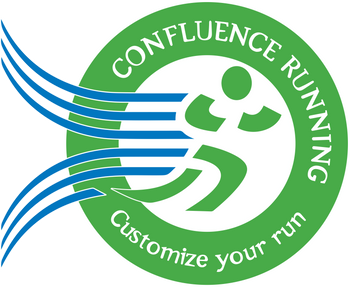Stroke Rate vs. Stroke Length: Unlocking the Secret to Faster Swimming

Swim Faster and Smarter: Perfecting the Balance Between Stroke Rate and Length
Swimming performance often hinges on a dynamic interplay between two key factors: stroke rate and stroke length. This relationship, sometimes referred to as the “speed equation,” determines how effectively a swimmer translates effort into forward motion. According to many experienced instructors, true progress comes from mastering a balanced approach rather than simply maxing out on either stroke rate or stroke length alone.
While it may seem logical to assume that a faster stroke rate automatically equals more speed, this can lead to inefficient “spinning” if the swimmer doesn’t apply enough pressure on the water. Conversely, aiming solely for a longer stroke can result in over-gliding, which disrupts the swimmer’s rhythm and can reduce momentum. A more holistic method incorporates both elements alongside another critical metric: rate of perceived exertion (RPE). When swimmers learn to monitor these three factors simultaneously, they can discover their optimal combination of distance per stroke, stroke turnover, and sustainable effort for a given distance.
Start Reading: How Do Plyometrics Aid in Adaptations? | Concept of Overload | Circuit Training
Common Pitfalls and How to Avoid Them
A frequent challenge is overemphasizing stroke length. When swimmers try to minimize stroke counts beyond a point that feels natural, they risk pausing too long between strokes, causing the legs or body position to drop and losing beneficial momentum. Alternatively, focusing exclusively on stroke rate can produce a hurried, chaotic stroke that creates more turbulence than propulsion.
Many coaches recommend using a tempo trainer to help swimmers sustain consistent timing and technique changes. By setting a beeping interval for every stroke, swimmers can experiment with different stroke rates while striving to maintain an effective stroke length. Counting one’s strokes in real time, rather than relying solely on a watch or pace clock, further encourages swimmers to make immediate adjustments mid-length, preserving efficiency and form.
Expanding “Gears” and Embracing Adaptability
Developing a broad range of “gears” enables swimmers to adapt to various conditions and race requirements. For instance, open water environments often demand a higher stroke rate to navigate waves or currents, along with a slightly reduced catch pressure to maintain balance in choppy water. In calmer settings, a deliberate focus on maximizing distance per stroke can be more advantageous.
Instructors often suggest combining structured pool practice with regular open water sessions, allowing swimmers to bridge the gap between controlled drills and unpredictable outdoor environments. By experimenting with subtle shifts in cadence and stroke distance, athletes gradually cultivate the versatility to adjust in real time—an essential skill for tackling anything from a short pool sprint to a long-distance open water race.
Practical Training Approaches
To deepen understanding of the speed equation, consider dedicated practice sets that vary stroke rate and stroke length under controlled conditions. For example, start by swimming at a comfortable rate while noting stroke count, then nudge up the rate by a small increment and see how it affects stroke efficiency. Throughout this process, keep an eye on RPE—if perceived effort skyrockets with little improvement in speed, it signals a potential mismatch between rate and length.
Some coaches advise going beyond mere numbers by instilling a purposeful mindset in every practice. Each motion in the water should be aimed at propelling the body forward, whether it’s the subtle flex of the foot in the kick or the angle of the hand during the catch phase. With consistent effort and a willingness to experiment, swimmers can use stroke rate and stroke length as complementary tools, rather than opposing strategies.
Letting Go of the Pace Clock
An over-reliance on the pace clock can detract from developing an efficient stroke. Instead, many experts suggest that swimmers focus on fine-tuning stroke metrics first, allowing speed to emerge naturally as a byproduct of improved technique. By periodically setting aside time targets and zeroing in on stroke rate, stroke length, and RPE, swimmers often discover that their times drop more consistently over the long run.
A Path Toward Ongoing Improvement
Refining the balance between stroke rate and stroke length is not a one-time fix but a continuous process. Each swimmer’s body type, skill level, and goals introduce unique variables into the speed equation, meaning no single “magic number” exists for everyone. Rather, swimmers progress by regularly assessing their stroke mechanics, experimenting with different rates, and paying close attention to effort and results.
With the right training philosophy—one that respects individual differences and promotes mindful practice—it’s possible to transform both stroke rate and stroke length into powerful allies in the pursuit of faster, more enjoyable swimming.
Tags for Swimming Faster: Stroke Length vs Stroke Rate
The speed equation for swimming, stroke rate vs. stroke length, how to improve swimming stroke rate, best stroke length for faster swimming, using a tempo trainer for swim efficiency, importance of rate of perceived exertion in swimming, reducing over-glide in swim technique, avoiding spinning in freestyle, increasing distance per stroke in freestyle, stroke count drills for swimming, balancing stroke rate and stroke length, open water swimming stroke adjustments, swim training to boost efficiency, tips for sustainable swim speed, freestyle stroke mechanics and technique, gears approach to swimming performance, advanced swim drills for competitive swimmers, tempo training for open water events, improving swimming stamina and pace, holistic approach to freestyle stroke optimization


